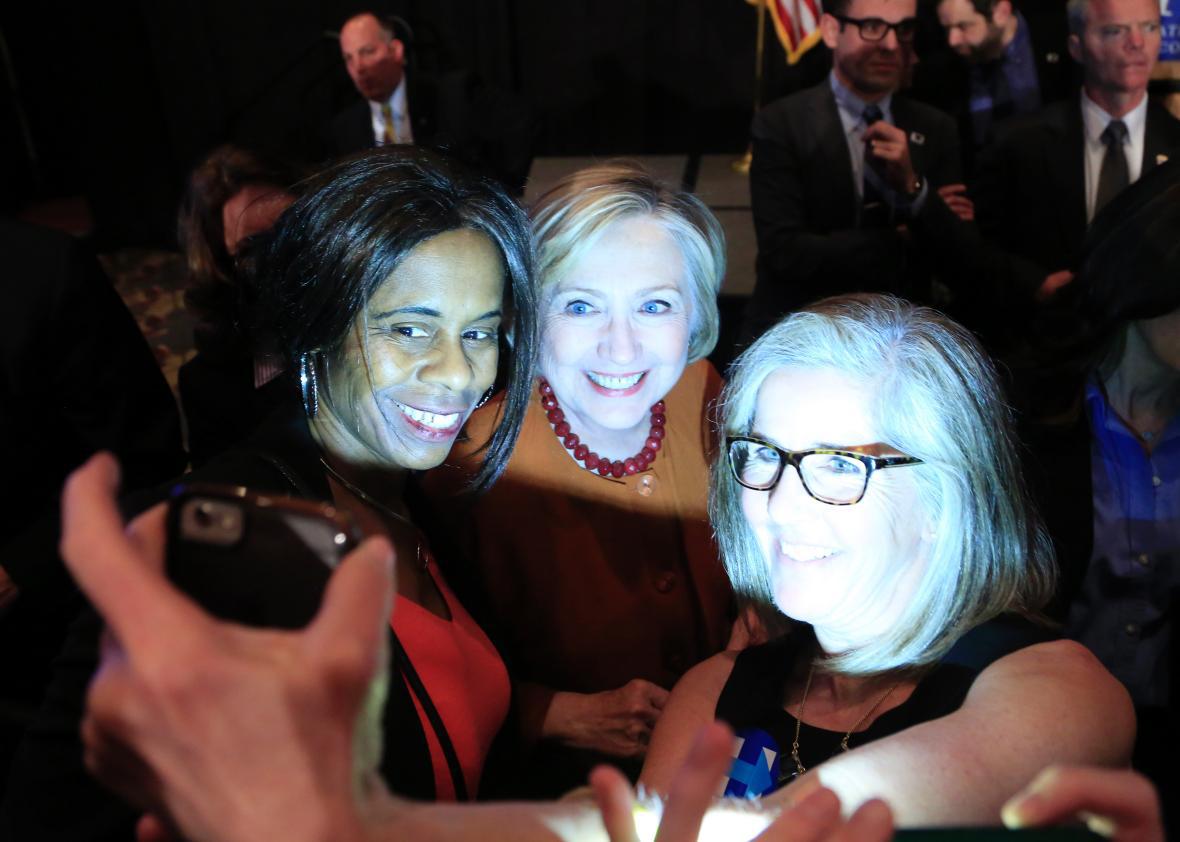Six months after Election Day, pollsters, Democrats, and much of the press are still trying to figure out what went wrong. How did Donald Trump outperform the polls in enough swing states to swipe an electoral victory Hillary Clinton appeared to have safely in hand? On Tuesday, the Nation offered the latest theory in a never-ending string of them, this one focused on what was by some metrics the single biggest surprise of the election: Trump’s victory in Wisconsin, where he trailed in polls by an average of 6.5 points ahead of Nov. 8.
According to new research conducted by data science firm Civis Analytics for liberal super PAC Priorities USA, strict voter ID laws significantly depressed the turnout of black and Democratic-leaning voters in a number of states, chief among them the Badger State. “Wisconsin’s voter-ID law reduced turnout by 200,000 votes, according to the new analysis,” wrote the Nation’s Ari Berman. “Donald Trump won the state by only 22,748 votes.” The unstated but implicit conclusion here is that Hillary Clinton would have claimed Wisconsin’s 10 electoral votes if it weren’t for a state law requiring residents to present a driver’s license or another form of government-issued ID to cast a nonprovisional ballot.
While Berman was careful to offer the necessary caveats—the study was conducted by progressives with a partisan interest, the analysis has not been peer-reviewed, etc.—such nuance didn’t make its way to social media.
But the Nation headline doesn’t say it all—not even close, as a number of political scientists and polling experts were quick to point out.
One of the first to arrive on the scene with a big bucket of cold water was Eitan Hersh, an assistant professor of political science at Yale University who has studied the effect of voter ID laws.
The most glaring problem with the report and how it’s being interpreted, Hersh told me by phone, is that the firm behind the analysis decided to operate at a surface level when it almost certainly had the data and expertise to dig much deeper. “Civis presents itself as a very sophisticated analytics shop,” Hersh said, “and yet the analysis they’re offering here is rather blunt.”
The group relied largely on state-by-state and county-by-county comparisons to reach its conclusions, but it could have—and Hersh maintains, should have—conducted a more granular analysis. Civis could have isolated communities that straddle the border between two states, for instance, or even used a comprehensive voter file to compare similar individuals that do and don’t live in states with new voter ID laws. Doing either would have allowed Civis to eliminate variables that may have ultimately skewed its findings. “It’s very weird to do an analysis the way they did when they presumably had a better way to do it,” Hersh said. “That’s a red flag that jumps out right away.”
Civis says it mostly limited itself to publicly available information so that its analysis was repeatable; Hersh counters that repeating a flawed analysis will just lead to the same flawed results. As the New York Times’ Nate Cohn pointed out on Twitter, and as Hersh echoed in his conversation with me, the absence of a detailed voter file-based analysis of the impact of voter ID laws—by Civis or anyone else for that matter—is in itself telling at this point. “I would in no way argue that these [voter ID] laws have no effect, but what we’ve found is that it’s a relatively small one,” Hersh said. Making things more complicated, he added, is that the effect of a voter ID law can be difficult to separate from that of other non-ID-based measures that disenfranchise the same types of people. “It’s just very unlikely that these voter ID laws by themselves would translate into the effect of 200,000 voters,” Hersh said.
Richard Hasen, an occasional Slate contributor and a professor of law and political science at the University of California–Irvine, voiced similar concerns about the Civis findings on his blog, pointing to a New York Times story published in the weeks after the election. Reporting from Milwaukee in late November, Times national correspondent Sabrina Tavernise cited Wisconsin’s voter ID law as one potential reason why turnout was down in the city’s poor and black neighborhoods. Tavernise, though, ultimately found a bounty of anecdotal evidence that black voters were simply far less excited to vote for Clinton in 2016 than they were to pull the lever for Barack Obama in 2008 and 2012. Here again it is difficult to offer a single explanation for depressed voter turnout: If a black man in Milwaukee decides it’s not worth jumping through hoops to cast a ballot, do we explain that by citing voter enthusiasm, the ID law, or both?
Most political scientists agree voter ID laws make it more difficult for some voters to cast a ballot on Election Day. There’s a lot more debate, however, over how much of an impact those laws have on turnout. But in the meantime, liberals should think twice about overstating the conclusions of a relatively superficial analysis like his one. Doing so risks shifting attention away from the reality that Republicans wrote these laws with the goal of disenfranchising minorities and other traditionally Democratic voters. That effort doesn’t have to swing an election for it to be shameful.
